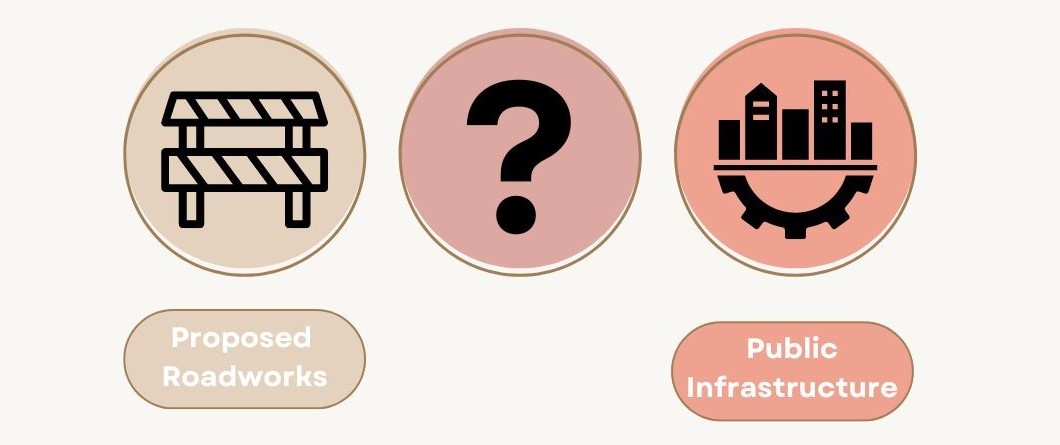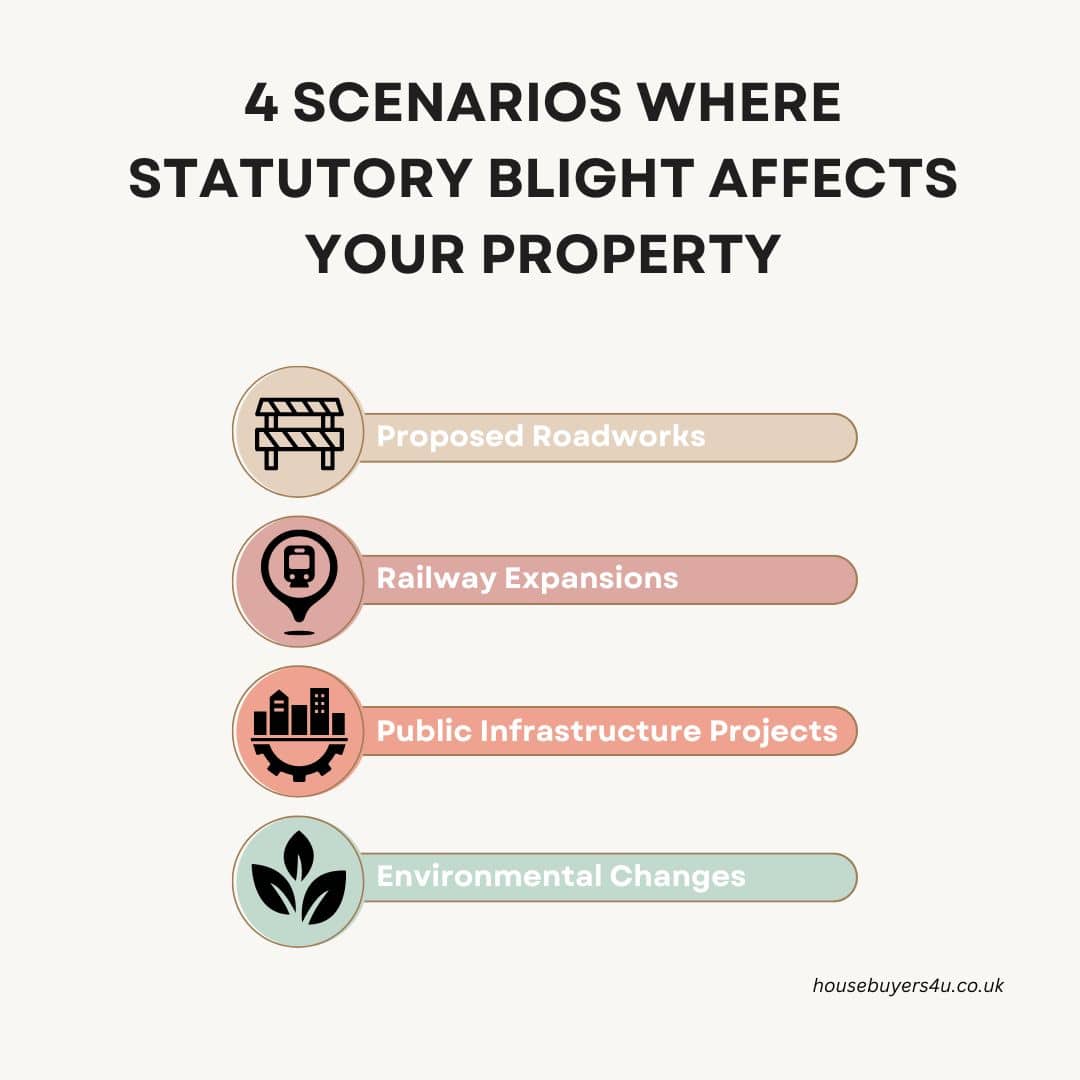Blight Notice: What it is and How to Use it Effectively

Curious about blight notices in conveyancing? These powerful tools can shield your property from public projects and preserve its value. Our essential guide reveals:
-
How a blight notice can be your best defence in preserving your property’s worth
-
The exact steps you need to take to serve a blight notice and get results
-
Expert tips to help you navigate negotiations and secure the best possible outcome
-
- What is a Blight Notice?
- Why You Need a Blight Notice: Purpose and Benefits
- Eligibility for Issuing a Blight Notice
- The Blight Notice Procedure: Your Step-by-Step Guide
- What Happens Next: After You’ve Served a Blight Notice
- Overcoming Obstacles: Key Challenges and Considerations
- Blight Notices in Conveyancing
- Final Thoughts and Key Takeaways
What is a Blight Notice?
A blight notice is a legal notice that gives homeowners an option when their property is affected by a compulsory purchase order (CPO) due to public projects or proposals, making it tough to sell or reducing its value.
Imagine you own a house that’s in a quiet, desirable area. Then, the local council announces plans to build a major bypass right next to your property. Suddenly, your once-peaceful home becomes less attractive to potential buyers, and its value starts to drop.
Blight notice forces the local council or relevant public authority to buy the property because plans for new roads or infrastructure have made it less desirable.
This situation is also known as "statutory blight." Even before any actual construction begins, just announcing a big public project can cause a property's value to drop or make it hard to attract buyers.
Property owners affected by statutory blight might also be eligible for an express purchase scheme, in which the acquiring authority offers to purchase the property quickly. You can read more about it here.
Situations Where Blight Notices Apply
Statutory blight can be applied in various scenarios where public projects negatively impact a property. Some common situations include:
-
Proposed roadworks: If a new road or bypass is planned to run close to your property, it reduces its desirability and can cause a drop in value.
-
Railway expansions: When new rail lines or expansions are planned that could increase noise, pollution, or traffic near your home, it becomes less appealing to potential buyers.
-
Public infrastructure projects: Large-scale developments such as new airports, power stations, or industrial complexes planned close to residential properties can significantly lower property values.
-
Environmental changes: Proposals for projects that could alter the environment around your property, such as flood defences, wind farms, or waste treatment facilities, might also make your home harder to sell.
Related: How much is my house worth?
Legal Basis for Blight Notices in the UK
The UK's legal framework for statutory blight is set out in the Town and Country Planning Act 1990. This legislation provides the guidelines and conditions under which property owners can issue a notice and the circumstances in which a public authority must respond by purchasing the property.
Why You Need a Blight Notice: Purpose and Benefits
Statutory blight is there to help property owners when their homes or land are affected by public projects.
It’s all about protecting you and ensuring that you’re not left struggling with a home that’s suddenly worth much less or hard to sell because of planned developments in the area.
Instead of being stuck with a devalued home you can secure a fair price based on what your property was worth before the blight.
If you own a house valued at £300,000, and then a new motorway is planned right next to it, your property’s value might suddenly drop to £250,000. The added noise and traffic could be the reason for this. By issuing a blight notice, you could force the authority to buy your house for the original £300,000, protecting you from that £50,000 loss.
Statutory notice can be a real lifeline if you’re trying to move on but can’t sell your home due to the planned changes.
Tip: Get a valuation done before and after the public project was announced so you can have a strong evidence for your case.
Eligibility for Issuing a Blight Notice
Before you can issue a blight notice, it's important to understand if you and your property meet the necessary criteria. Here's a detailed look:
-
Types of properties that qualify:
-
Residential properties (e.g., houses, flats)
-
Small businesses (e.g., shops, offices)
-
Agricultural land (e.g., farms, pastureland)
If you own any of these types of properties, and they are impacted by a public project, you may be eligible.
-
-
Conditions that must be met:
-
Significant impact: The property must be notably affected by the public project.
-
Drop in property value: You must be able to show that the project has led to a substantially reduced price.
-
Difficulty in selling: Alternatively, if the project has made it challenging to sell your property, this could also qualify.
-
-
Who can serve a blight notice?:
-
Property owners: The primary individuals eligible to serve a notice.
-
Long-term tenants: In some cases, long-term tenants with a strong interest in the property may also be able to serve a notice.
-
Legal rights: It’s essential that you have the legal standing to issue a notice, which typically means owning the property or holding a lease.
-
Tip: Don’t wait too long to issue a notice if you believe your property qualifies. The sooner you act, the quicker you can resolve the situation and avoid further financial loss.
The Blight Notice Procedure: Your Step-by-Step Guide
Serving a notice involves several key steps. Here's how you can navigate the process:
Gather the required information and documentation
Before you begin, collect all the necessary information and documents such as:
-
Proof of ownership: You’ll need documents like your title deed or a recent mortgage statement to prove that you own the property.
-
Property valuation: Obtain a recent valuation of your property to demonstrate how much its value has been affected by the public project.
-
Details of the public project: Collect all relevant information, including planning documents, maps, and official announcements, to show the impact of the project on your property.
-
Evidence of impact: Compile evidence such as photos, reports, or statements from potential buyers to support your claim that the project has negatively affected your property.
Tip: Get everything in order beforehand to make the process smoother and increase your chances of a successful outcome.
Complete the notice form
It includes the following:
-
Personal details: Your full name, address, and contact information
-
Property details: The address and a description of your property
-
Project impact: How the public project has affected your property
-
Supporting documents: All the gathered evidence
-
Declaration: Sgn and date the form to declare that all the information provided is accurate
Submit the blight notice
Notices are typically submitted to the local council or the relevant government department responsible for the project.
You can submit it by post or, in some cases, online. It’s a good idea to send it via recorded delivery to ensure it’s received. Make sure you send it to the correct department to avoid delays.
Tip: If you’re unsure at any stage, consider seeking legal advice to guide you through the process.
What Happens Next: After You’ve Served a Blight Notice
Once you've submitted your notice, the ball is in the acquiring authority's court. Here's what you can expect next:
After receiving your notice, the authority has a few options. They might:
-
Agree to buy your property at the unblighted value.
-
Dispute the notice, especially if they believe the property doesn’t meet the criteria.
-
Request more information or documentation before making a decision.
Timeframes can vary, but the authority typically has a set period to respond to your notice, often a few months. It's a waiting game during this time, but knowing the process is underway can provide some peace of mind.
If the authority agrees to purchase your property, the next step is negotiation and valuation. An independent valuation will usually determine the fair market value of your property before the blight occurs.
It’s important to be prepared for some back-and-forth here, as both you and the authority will want to ensure a fair deal.
The outcome of your notice could go a few different ways:
-
The authority agreed to buy your property at a price that reflects its value before the public project was announced.
-
If the acquiring authority objects, they may issue a counter notice, and you may need to consider legal action or further negotiations to reach a resolution.
Overcoming Obstacles: Key Challenges and Considerations
Serving a notice can be challenging, and not all are accepted.
Sometimes, authorities reject notices because:
-
They believe the property hasn’t been significantly affected.
-
It doesn’t meet the legal criteria.
-
There are issues or incomplete forms.
-
Evidence is insufficient.
If your notice is turned down, you can appeal the decision by taking your case to a higher authority, such as the Upper Tribunal Lands Chamber or court. Strengthening your case with additional evidence or legal support can improve your chances during the appeals process.
Read more about the Upper Tribunal Lands Chamber
If an appeal isn’t successful, there are other options to consider:
-
Try negotiating directly with the acquiring authority for compensation or selling the property on the open market.
-
Explore other legal avenues for compensation.
Blight Notices in Conveyancing
Statutory blight can significantly impact property transactions, particularly during conveyancing.
For sellers, a blight notice might make the property harder to sell, as potential buyers could be concerned about the complications it brings.
Buyers, on the other hand, should be careful to fully understand any existing or potential blight issues that could affect the property's value or usability. This is where conveyancers are important.
A good conveyancer will conduct thorough searches and advise their clients—whether buyers or sellers—on how blight notices could influence the transaction.
They'll guide you through the whole legal process and help negotiate terms that take the blight situation into account.
In short, having an experienced conveyancer by your side can help deal with properties affected by blight notices easier.
Final Thoughts & Key Takeaways
Blight notices are a valuable tool for a property owner whose property is affected by public projects, helping them to secure fair compensation or sell their property at its pre-blight value.
If you’re facing a situation where your property’s value has dropped due to proposed development schemes, understanding your rights and the blight notice process is essential.
Key Takeaways:
-
Understand the process: Knowing how to serve a blight notice and the steps involved can help you handle the situation more effectively.
-
Gather solid evidence: Strong documentation and proof of how your property has been affected are crucial to a successful blight notice.
-
Seek professional advice: Engaging with a reputable estate agent, conveyancer, and property lawyer can provide guidance and help protect your interests during the process.
-
Be proactive: Staying informed about public projects in your area and taking early action can protect your property rights and financial investment.
Be informed, prepared, and proactive so you’re not left bearing the financial burden of public projects, and you can make confident decisions about your property’s future.


